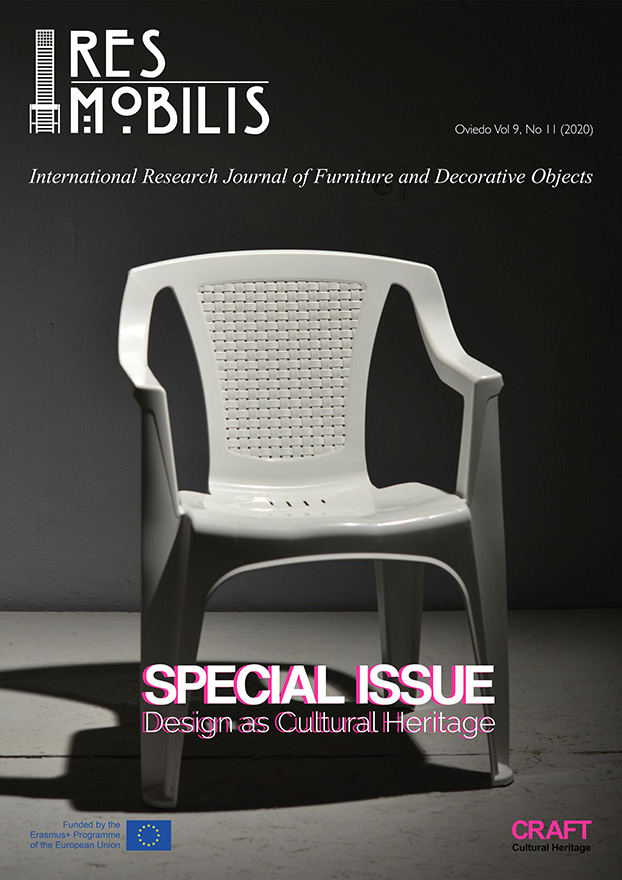Abstract
Design as Cultural Heritage is a 2018 European proposal; this draws on Tangible and Intangible Cultural Heritage regarded as ‘our heritage: where the past meets the future’. This paper aims to answer the research question about the nature of the space between the human been and the world. Therefore, it will analyse certain processes that occur in their thickness, focussing on ‘authenticity criteria’ employed by UNESCO to define tangible culture in order to identify different language use of ‘culture’. From these, both criteria and usage, this paper evaluate the four main reasons multidisciplinary background to support the late correlation between ‘tangible and intangible culture’. Eventually, this paper proposes four sequences of symbolic objects which embody tangible culture contents.
Key Words: Culture, Tangible, Intangible, Authenticity.
References
Albrecht, Hans Joachim. Escultura en el siglo XX. Barcelona: Ed. Blume, 1981.
Ariza, Verónica (coord.) La investigación en Diseño: una visión desde los posgrados en México. Mexico: Univ. Autónoma Ciudad Juárez, 2012.
Baudrillard, Jean. Le système des objets. Paris: Éditions Gallimard, 1968.
Campos, Alfredo and González, Mª Ángeles. “Importancia de las imágenes mentales en el pensamiento”, Revista Mexicana de Investigación en Psicología, Vol.9, nº 2 (1998): 113-119.
De Laiglesia, Juan Fernando et al. (eds.) La cultura transversal: colaboraciones entre arte, ciencia y tecnología. Vigo: Universidad de Vigo, 2010.
De Laiglesia, Juan Fernando. “El juego del giro: Oriente- Occidente” in Teoría bruta de la forma frágil: escritos adverbiales de arte, estética y enseñanza, 274-288. Pontevedra: Edicións do Castro, 1999.
Didi-Humberman, Georges. Atlas. Cómo llevar el mundo a cuestas? Madrid: M.N.R.S; 2011
Focillon, Henri. Éloge de la main. Paris: Presses Universitaires de France, 1981 [1934].
Francioni, Francesco. “Defining Intangible Cultural Heritage” in The 2003 UNESCO Intangible Heritage Convention: A Commentary edited by Janet Blake and Lucas Lixinski, 52. Oxford: Oxford University Press, 2020.
Hawkes, Jon. The Fourth Pillar of Sustainability. Culture’s Essential Role in Public Planning. Melbourne: Common Ground, 2001.
Heidegger, Martin. El origen de la obra de arte. Mexico: Fondo de Cultura Económica,1958.
Jung, Carl Gustav. “Foreword” to Richard Wilhelm, I Ching. Barcelona: Edhasa,1981 [1949]
Márquez, Israel. Una genealogía de la pantalla. Del cine al teléfono móvil. Barcelona: Anagrama, 2015.
Martinell, Alfons (coord.) Cultura y desarrollo: un compromiso para la libertad y el bienestar. Madrid: Fundación Carolina, 2010.
Morin, Edgar. El Método: 1-La naturaleza de la naturaleza. Madrid: Cátedra, 2006.
Munjeri, Dawson. “Patrimonio Material e Inmaterial: de la Diferencia a la Convergencia”. Museum international: Intangible Heritage, 221-222 (2004): 13-21.
Munari, Bruno. ¿Cómo nacen los objetos? Apuntes para una metodología proyectual. Barcelona: Gustavo Gili, 1983.
Perniola, Mario. La estética contemporánea. Madrid: Machado Grupo de Distribución, 2016.
Pombo, Olga. O círculo dos saberes. Lisboa: Centro de Filosofia das Ciências da Universidade de Lisboa and Gradiva, 2012.
Racionero, Luis. Leonardo da Vinci. Barcelona: Ediciones Folio, 2014.
Strandh, Sigvard. Máquinas: una historia ilustrada. Madrid: H. Blume Ediciones, 1982.

